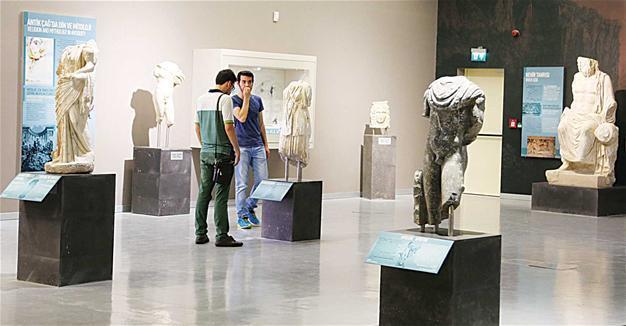Hatay to welcome world’s largest mosaic collection
HATAY
 The archaeology museum in the southern province of Hatay, one of the richest places in Anatolia in terms of archaeology, will soon be home to the world’s largest mosaic collection when its second stage is finished within the next six months.
The archaeology museum in the southern province of Hatay, one of the richest places in Anatolia in terms of archaeology, will soon be home to the world’s largest mosaic collection when its second stage is finished within the next six months. “We were not able to display all of the artifacts in the past because of limited space. Since the opening of the new museum, the artifacts have been on display in a better environment. Works are continuing non-stop to open the second stage of the museum. When it is finished, this museum will have the largest mosaic collection in the world. We will take this title when we display nearly 2,500 square meters worth of mosaics,” Hatay Archaeology Museum Director Nilüfer Sezgin recently told Anadolu Agency.
The Hatay Archaeology Museum, which presents unique historical artifacts that have been unearthed during archaeological excavations in the city from mosaics to coins and pottery, is the most important tourist attraction in the region.
Works have been continuing to open the second stage of the museum, which displays artifacts unearthed from the Üçağızlı Inn in the Samandağ district, while also featuring the history of humanity dating all the way back to 43,000 years ago.
Sezgin said the first stage of the museum was opened in December 2014, with the second stage to open by the end of this year.
The museum covers an area of 5.3 hectares, and includes an exhibition hall covering 1.17 hectares area. A 5,000-square-meter area is currently open to visitors.
Visitors can see many unique mosaics in the museum, she added.
Sezgin said works were also continuing on the earthenware and glass artifacts sections in the first stage of the museum. “As it has been located at a crossroads since the past, Hatay has been home to very rich civilizations. This is why the archaeological findings are very unique,” she added.
She said the museum inventory had a total of 37,504 pieces, including ethnographic and archaeological artifacts, coins, tablets, seals, seal impressions and manuscripts.
“The second stage will display the rich coin collection in Antakya, which was one of the few mint centers in the past. The museum receives more visitors every other day and has made a great contribution to the city’s promotion,” Sezgin added.
















